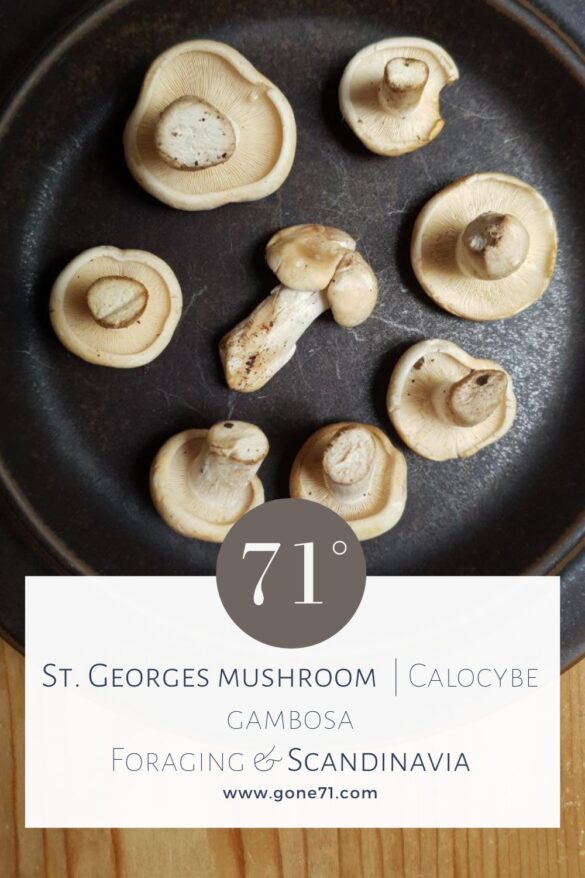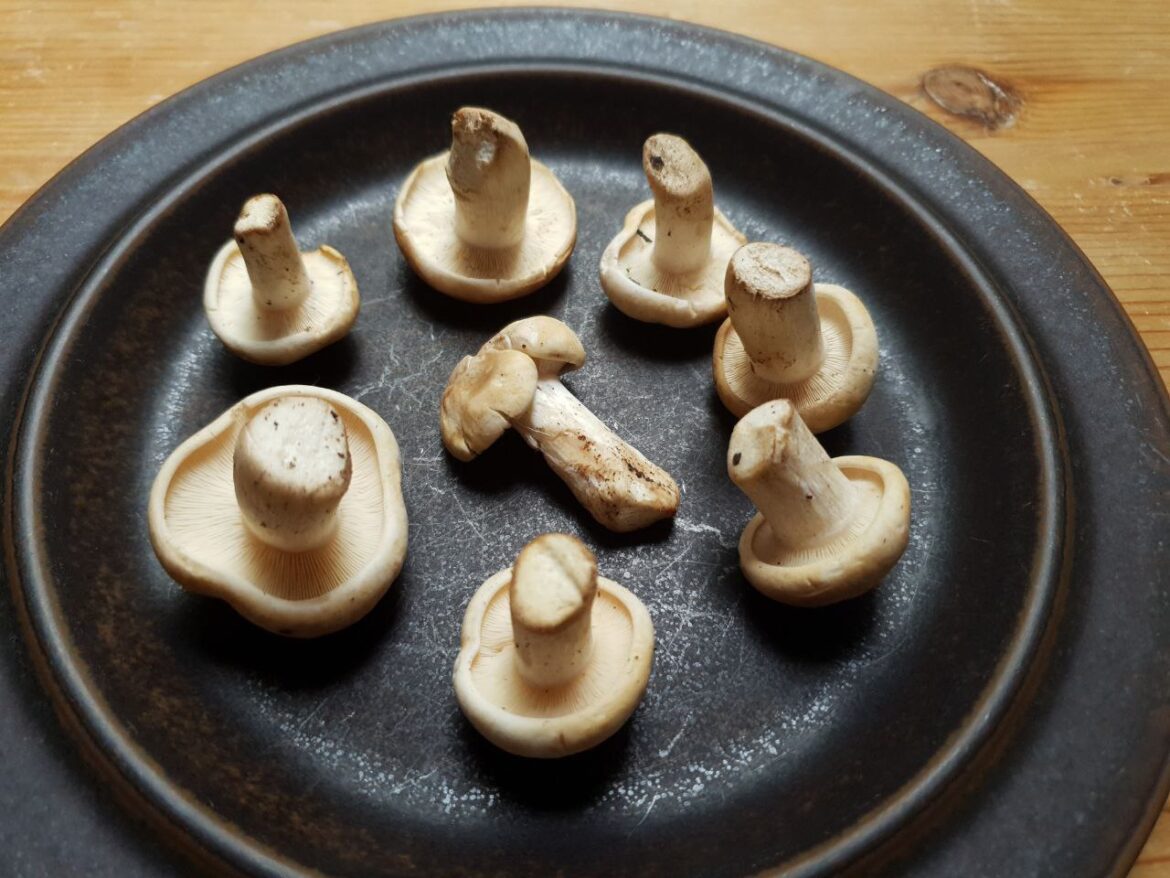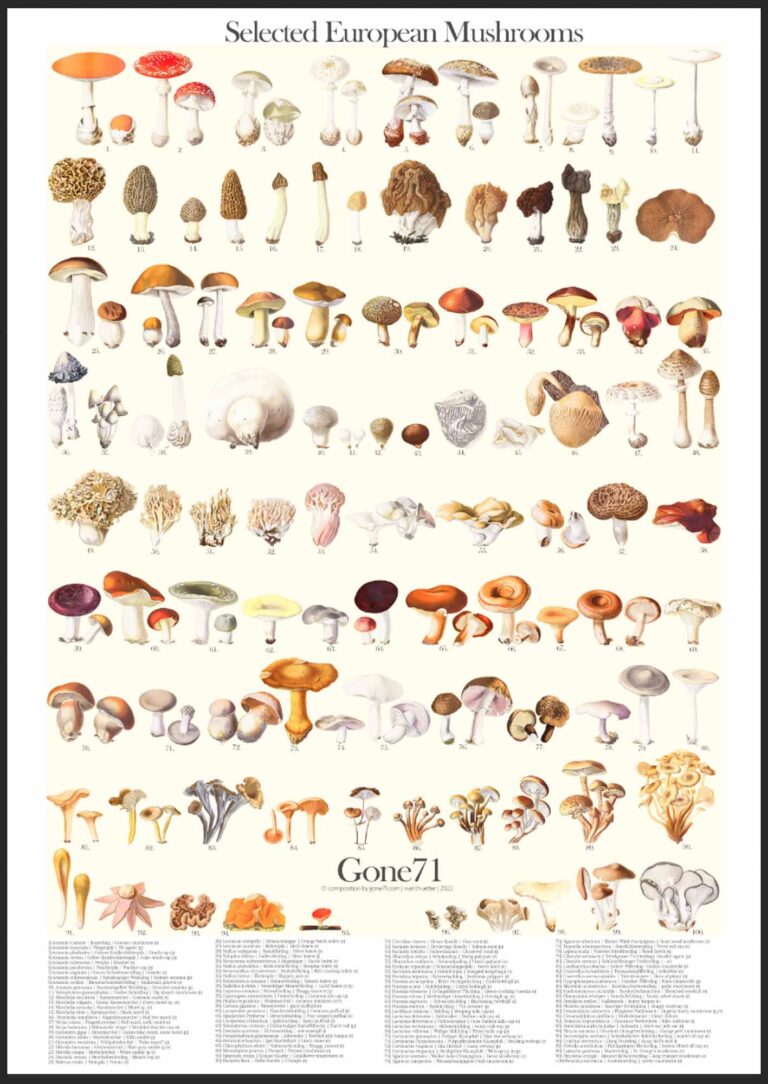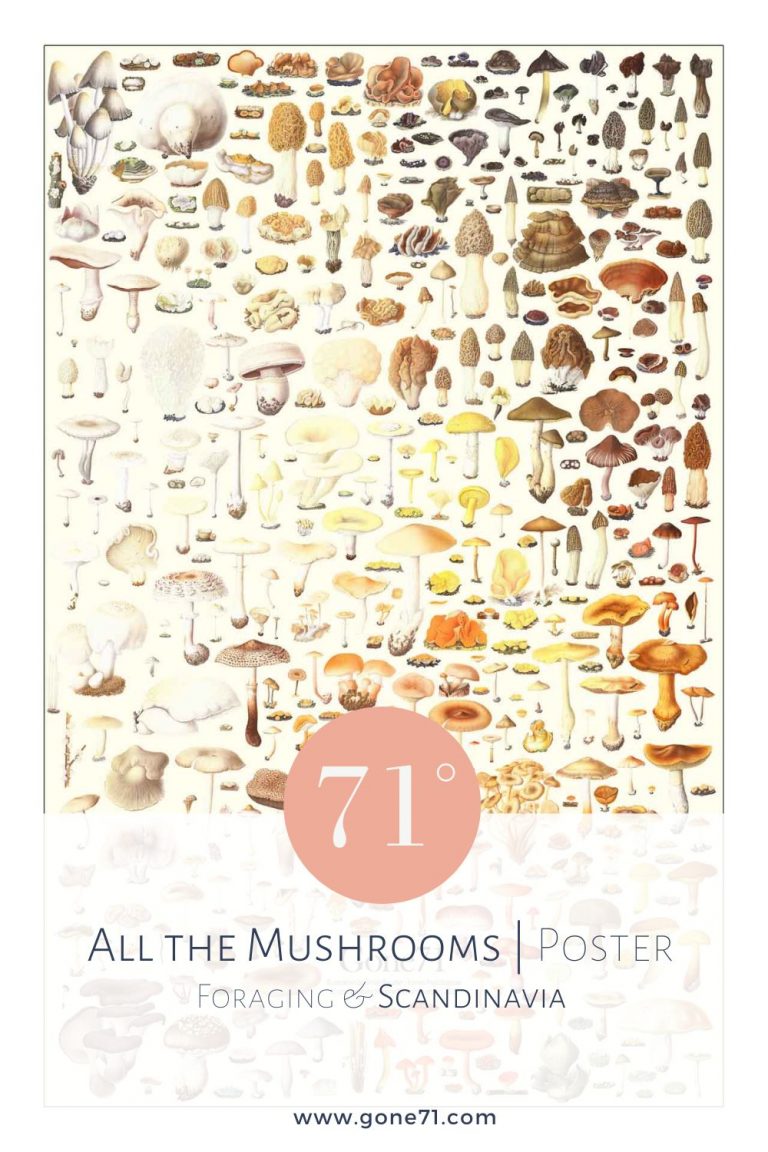nor.: Vårfagerhatt | swe.: Vårmusseron | fin.: Kevätkaunolakki | dt.: Mairitterling, Maipilz, Georgsritterling
The St. George’s mushroom (Calocybe gambosa) is one of the first edible mushrooms in spring, along with the various types of morel mushrooms. Its distinctive floury smell, early appearance and thick cap flesh make it not too difficult to identify, despite its almost pure white appearance. In countries such as Italy, France or Spain, St. George’s mushroom is considered a welcome delicacy.
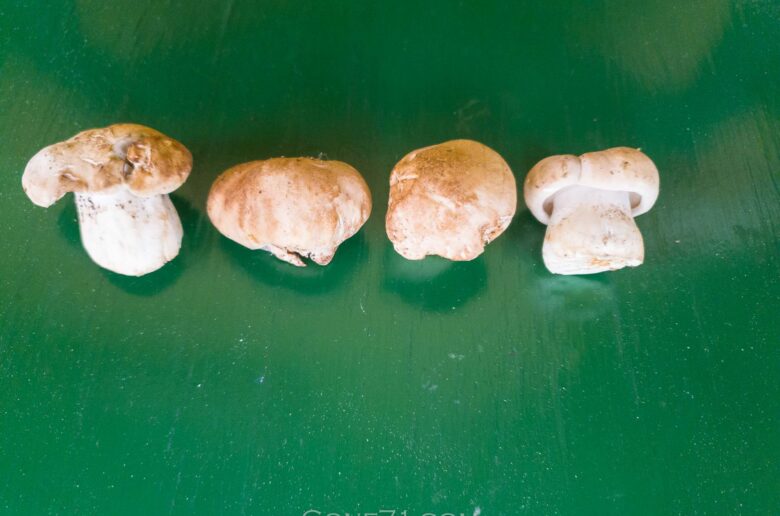
Appearance & habitat of St. George’s mushroom (Calocybe gambosa)
cap diameter: up to 20 cm
height: up to 10 cm
months: April – June (Central Europe)
colours: white flesh, white or white-yellowish cap, white stem
habitat: Meadows, parks, deciduous forests, alluvial forest, poplars…, calcareous soil
odour: Floury to cucumber-like
consumption: cooked
The St. George’s mushroom is a popular edible mushroom that is easily recognized by its distinct mealy, cucumber-like odor. When crushed between the fingers, the flesh of the mushroom emits this unique fragrance, making it relatively easy to identify. Its taste is mild and mealy, making it a versatile ingredient in many dishes.
The cap of the St. George’s mushroom is white to yellowish in color, with a smooth surface and a rolled edge in young specimen. It usually ranges from 3 to 15 centimeters in diameter and can sometimes grow up to 20 centimeters. As the mushroom ages, the center becomes brown and scaly.
The flesh is thick, firm, and white, sometimes slightly yellowish to yellow-brown, with no discoloration when cut. It is also fibrous and very meaty, and when cut lengthwise, the flesh is wider than the gills (!). This is an important detail to identify this mushroom.
The stem can grow up to 9 cm, white to yellowish in color, and cylindrical, often with a slightly club-shaped base. There is never a ring or remnants of the veil present on the stem. The gills are white, becoming yellowish with age, and closely spaced with many intermediate gills.
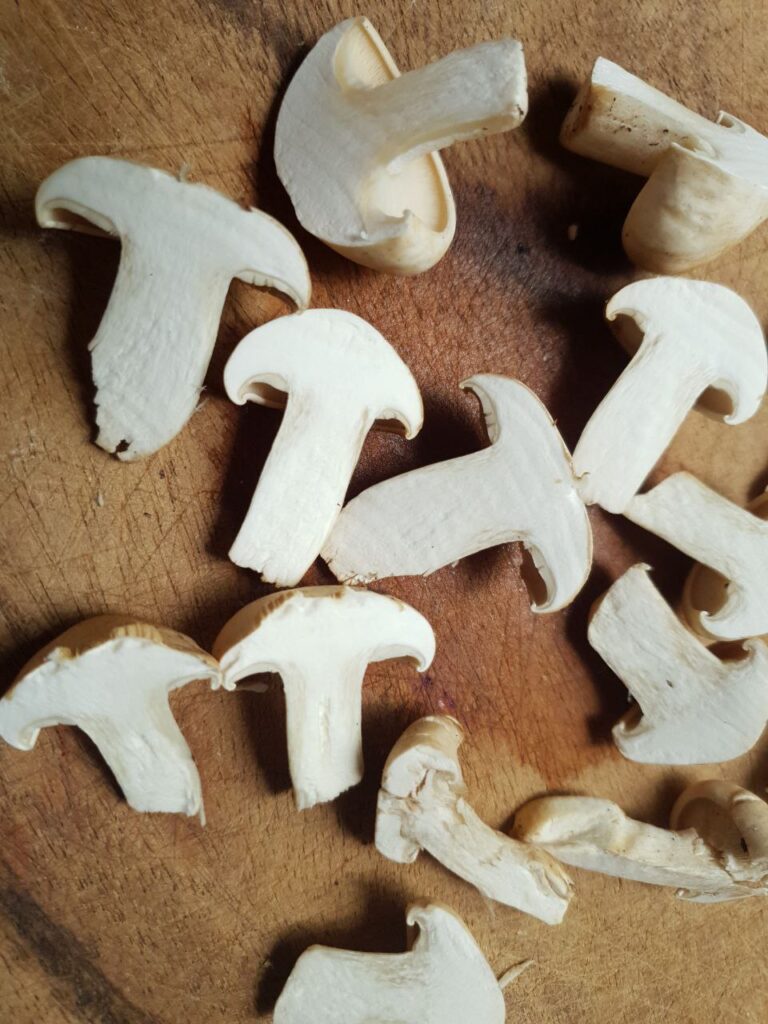
Habitat
St. George’s mushrooms are commonly found in meadows, parks, deciduous forests, floodplain forests, especially in company of aspen, poplar, and occasionally larch trees. They prefer a calcareous soil and are often found in fairy rings. They are widespread and very common from spring to early summer.
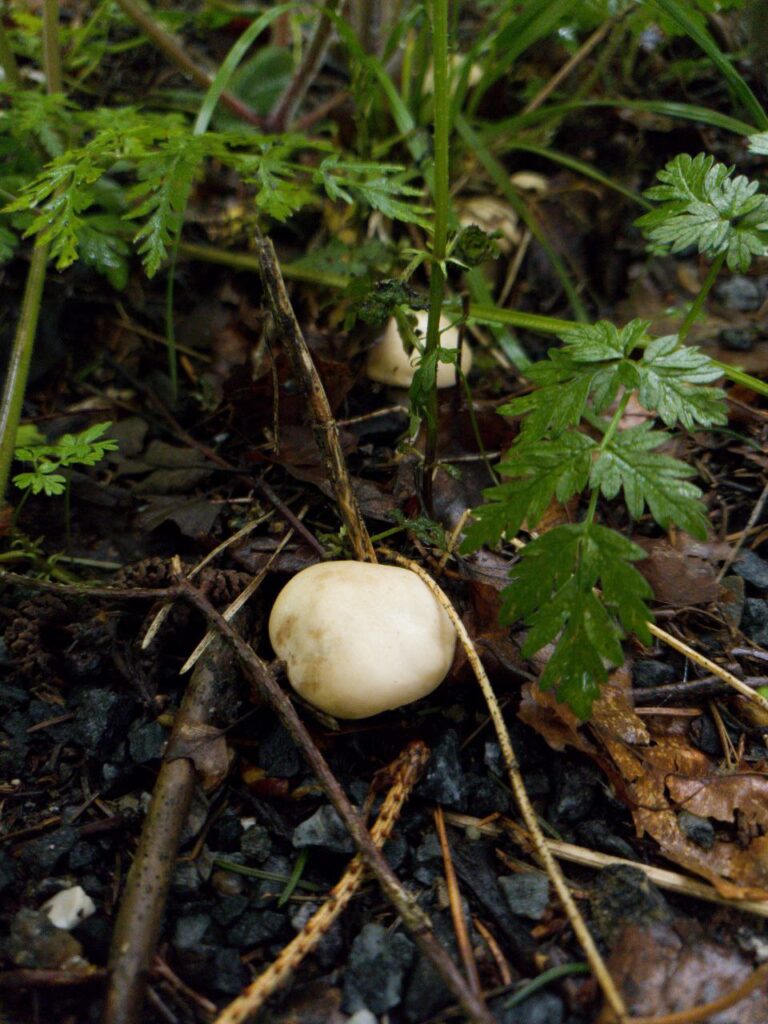
Look-Alikes of St. George’s mushroom (Calocybe gambosa)
Be aware, that there are potentially poisonous (even deadly) doppelganger of this mushroom. One of the most problematic confusion is with Entoloma sinuatum the livid pinkgill. Younger specimen of this mushroom look almost identical. The odour is more unpleasant but occasionally it can have a floury note too. The same goes for the taste which is also rather unpleasnat. The gills in the St. George’s mushroom are also thiner and tighter but in younger specimen this can be hard to distinct.
The stem of the livid pinkgill is usually thickened at the base. The base of the St. George’s mushroom is usually only slightly thickened. The occurrence of this mushroom is also mostly from summer onwards and increasingly extends into autumn. However, exceptions are possible.
And of course there are other dangerous doppelgangers like Clitocybe dealbata (ivory funnel) or juvenile stages of Inosperma erubesens (deadly fibrecap) and others.
If you want to collect these mushrooms, you really have to know exactly what you are doing.
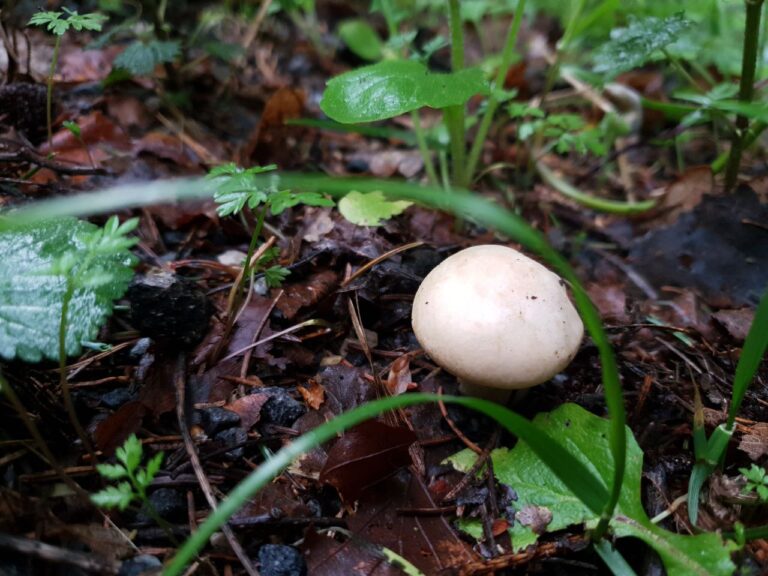
An overview of DEADLY TOXIC confusion partners of the St. George’s mushroom (Calocybe gambosa)
- Inosperma erubesens (deadly fibrecap): This mushroom has a radially fibrous, cracked cap, reddening flesh, and gray-brown gills. It also has a sweet, fruity odor without a floury component. Only very young specimens can resemble the St. Georges mushroom. The spore print is dark brown.
- Entoloma sinuatum (livid pinkgill): This mushroom is very similar to the St. Georges mushroom and also smells like flour. It typically appears only from August onward (Central Europe). It has white gills that later turn yellowish and a creamy-pink cap color. The spore print is pinkish-brown.
- Clitocybe dealbata (ivory funnel): The white funnel mushrooms are thinner fleshed, often without any or with only a minimal floury odor, and have descending gills.
Caution: Mushrooms Are Not Guesswork!
Only harvest mushrooms that you can identify with 100% certainty! The consequences can be life threatening if you are wrong. If you have the slightest doubt: do not eat the mushroom! This is not a mushroom guide! For correct identification consult a mushroom expert.
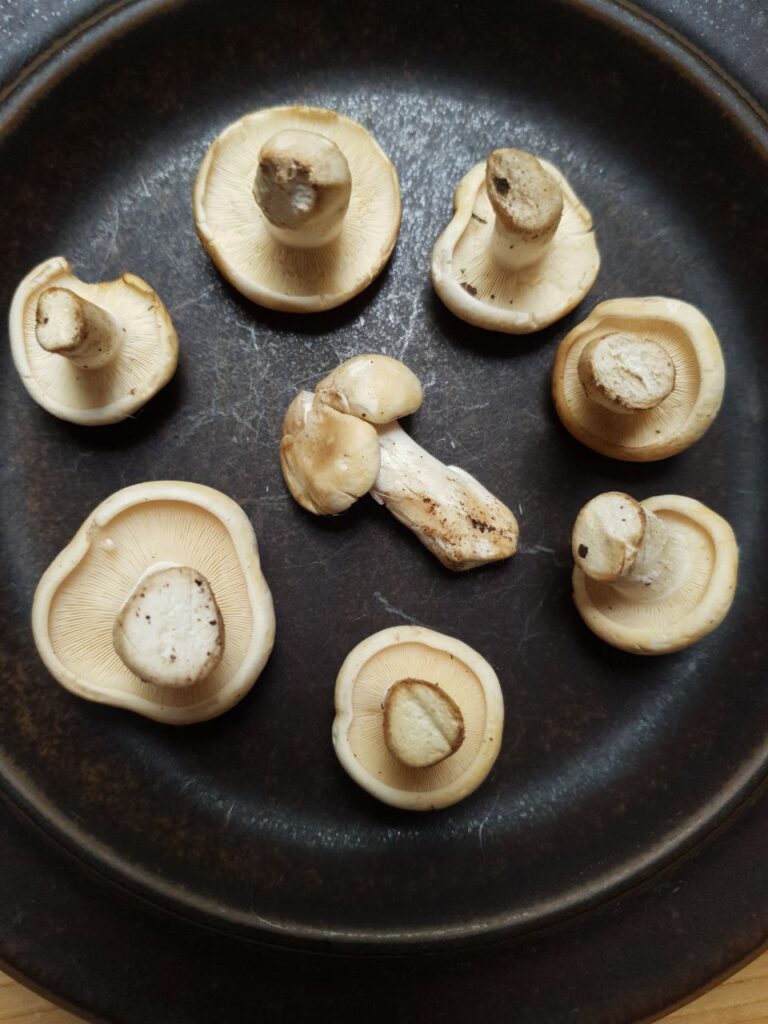
St. George’s mushroom (Calocybe gambosa) in the kitchen
St. George’s mushroom has a long history of culinary use, dating at least back to medieval Italy where it was one of the most expensive and highly regarded mushrooms in certain regions of central Ital.
In the Basque Country of Spain, St. George’s mushroom is highly prized and can fetch very high prices. In Bilbao, it is typically eaten in an omelette and is a cornerstone of local gastronomy. The demand for the mushroom in the Basque Country is so high that it has to be imported from Eastern Europe (e.g. Romania).
One of the most popular ways to prepare St. George’s mushrooms is to sauté them in butter with garlic and herbs. This simple preparation highlights the mushroom’s delicate flavor and aroma and can be used as a side dish or a topping for grilled meats and vegetables.
St. George’s mushrooms can also be used in pasta dishes, such as mushroom risotto or fettuccine with mushroom cream sauce. The mushrooms add a rich, earthy flavor to the dish, and the creamy texture of the sauce pairs well with the firm flesh of the mushroom.
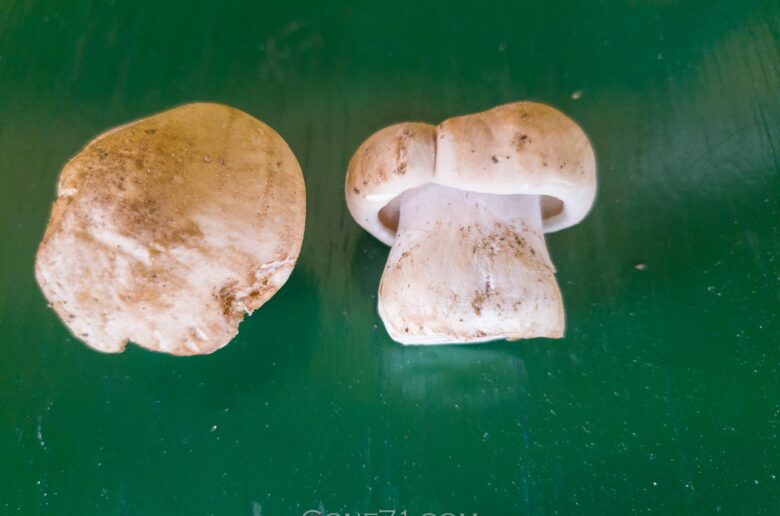
St. George’s mushroom (Calocybe gambosa) recipe
Here are some recipe ideas for St. George mushroom with different cultural backgrounds:
- Italy:
- Risotto with St. George’s mushroom and parmesan cheese
- Fettuccine with St. George’s mushroom and truffle oil
- Spain:
- Revuelto de setas (Spanish mushroom scrambled eggs) with St. George’s mushroom
- Grilled St. George’s mushroom skewers with garlic and parsley
- Romania:
- St. George’s mushroom stew with onions, garlic, and paprika
- Fried St. George’s mushroom with polenta and sour cream
- United Kingdom:
- Creamy St. George’s mushroom soup with thyme and cream
- St. George’s mushroom and goat cheese tart
- Russia:
- Pickled St. George’s mushroom salad with onions and dill
- St. George’s mushroom pierogi with sour cream and chives
- Japan:
- St. George’s mushroom tempura with soy sauce and grated daikon
- Mushroom and rice bowl with St. George’s mushroom, shiitake, and enoki mushrooms
- India:
- St. George’s mushroom curry with coconut milk and spices
- St. George’s mushroom and potato samosas
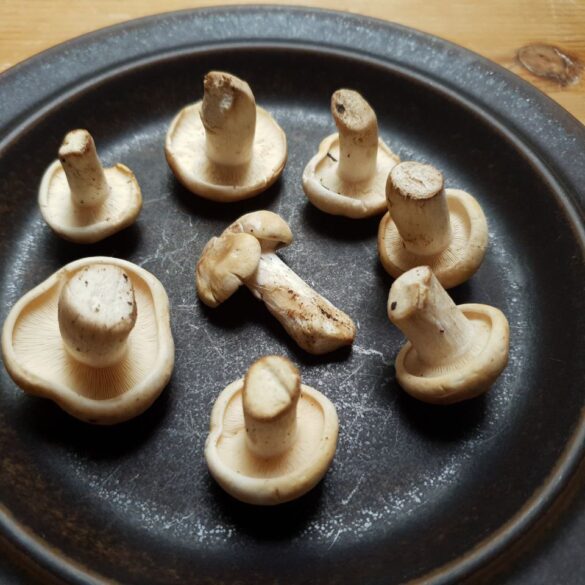
Revuelto de Setas with St. George's mushroom (Calocybe gambosa)
Ingredients
- 6 eggs
- 200g St. George's mushrooms
- 1 garlic clove, minced
- 1/2 onion, chopped
- Olive oil
- Salt and pepper
- Fresh parsley, chopped (optional)
Instructions
- Clean the St. George's mushrooms and chop them into small pieces.
- Heat a generous amount of olive oil in a pan over medium heat. Add the garlic and onion and cook until the onion is translucent.
- Add the mushrooms to the pan and cook until they are tender and lightly browned. Season with salt and pepper.
- Beat the eggs in a bowl and pour them over the mushrooms in the pan. Use a wooden spoon or spatula to scramble the eggs, stirring constantly until they are cooked to your liking.
- Sprinkle with fresh parsley (optional) and serve immediately.
Notes
Revuelto de Setas is often served with crusty bread or a side salad for a delicious and satisfying meal.
We have compiled this overview with the best of knowledge and belief, but do not claim to be complete and reserve the right to make errors.
Learn more about poisonous mushrooms and mushroom poisons here
↓↓↓
Find some inspiration in our illustrations
↓↓↓
Find some inspiration in other mushroom recipes
↓↓↓
